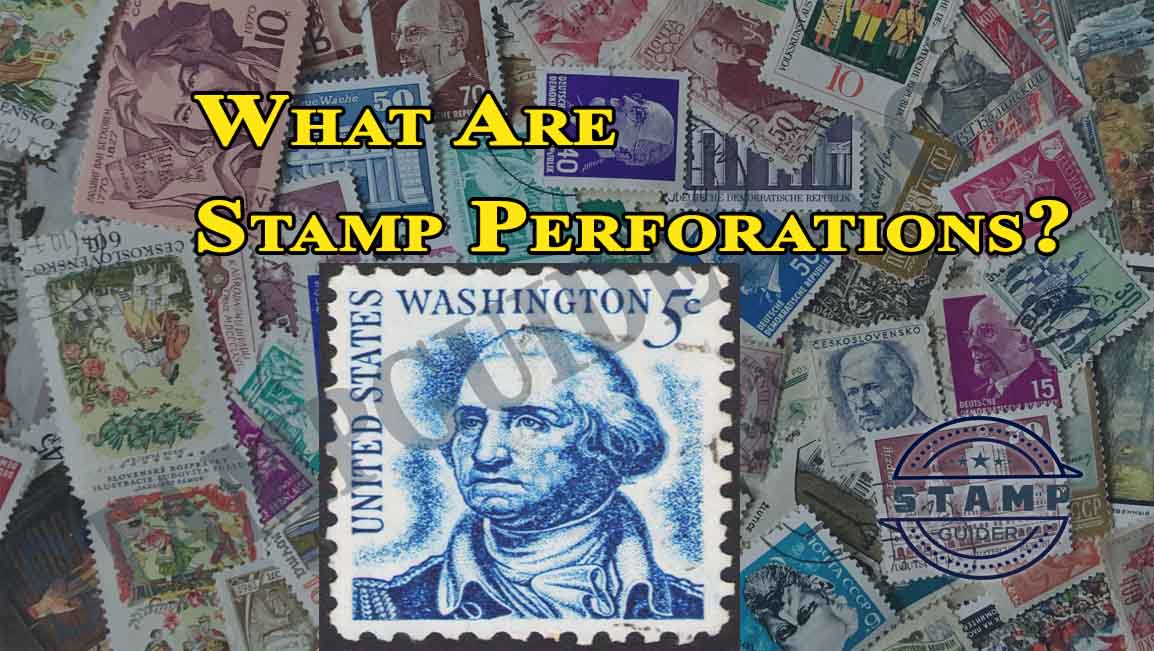Stamp perforations are tiny holes Perforation between rows and columns of stamps. They make the separation much more manageable. Before perforation, postmen had to cut stamps by hand, which often resulted in errors. Depending on the severity of the error (for example, cutting the design), some stamps could not even be sold or used. Perforations (or lack thereof) can also help collectors determine the value of a stamp. Short, creased, folded or cut perforations can even cause the stamp to lose value.
Perforation is the most widely used and accepted method of separating stamps, and stamps containing it can be found all over the world. As mentioned above, not all stamps (since the days when prepaid postage tax was invented) had no perforations. Penny Black, the world’s first postage stamp, had straight lines on all four sides. This is called an unperformed stamp, and any genuine stamp made in this way is certainly worth a lot of money due to its age / rarity.
Table of Contents
Stamp perforation history
It didn’t take long for people to recognize that cutting and tearing stamps was not only long, but monotonous. The manual cutting process only lasted a decade between 1840 and 1850. Eventually, a man decided he would work to find a solution.

Henry Archer produced the “Roulette Archer” in 1847. This machine would make a series of cuts around the postage stamp. Archer created two machines, but neither was fully capable of delivering the results he wanted. While roulette turned out to be a method of sorting ephemeral prints, Archer’s ideas led to a new style of die-cutting. In 1849 he patented a machine that incorporated the “Pente” perforation. The comb technique was finally sold in 1853.
In 1854 David Napier and Son Ltd built new machines based on Archer’s ideas. The first edition of the performance stamps was Penny Red in Great Britain on January 28, 1854. In the same year, William and Henry Bemrose designed their version of a roulette machine, which was later converted to a spike machine by George Howard . Bemrose & Co sold the rotary Perforation to Toppan & Carpenter in 1855. T&C printed all stamps for the US Post, and in two years the first hallmark stamps in America (three percent stamps) were issued!
In 1857, almost all stamps in the world were created using the perforation separation method.
What is “Private Perforation”?
Between 1902 and 1927, private manufacturers pierced stamps sold to them by the Bureau of Engraving and Printing. The Bureau manufactured unperforated sheets which were sent for perforations, creating a wide and unique variety of “private perforations”.
Can I measure the number of perfs on the side of my stamp?
Yeah! With a Perforation gauge, you can get the exact number of holes on each side of your stamp. The counter measures the number of holes over two centimeters. Start by lining up the holes with the pins on the meter. Make the horizontal sides first, then the vertical sides. If there are 10, you would describe the tag as “Perf 10.”
If you don’t have a reader, you can try using programs like Perfor-Master, e Perforation, or ezPerf. Typically, the horizontal measurement is listed first, then the vertical.
How to measure perforations
Sometimes, two seals look the same and the only difference is the caliber of the perforations. Perforations are small rows of holes drilled between the stamps to facilitate separation. We use a drill gauge to measure the number of holes or teeth within two centimetres. If a seal has 11 perforations in 2 cm, we say that it is “Perf 11”. Here are some tips on how to measure perforations:
- To measure your stamp, place it in the center of the meter.
- Slide the stamp up or down until the perforations on the stamp line up with the gauge pattern across the entire length of the stamp. (If the perforations only align with the meter in part, then you still haven’t found the correct meter – keep trying!)
- Be sure to measure a horizontal side and a vertical side of the seal, as many seals have what is called “composite perforations”. They have a different drilling gauge on the horizontal and vertical sides. In the catalogs, the horizontal drill gauge is listed first, then the vertical. For example, the stamps for the 1984 Winter Olympics (US # 2067-70) measure 10 ½ x 11 profiles. This means that there are 10 ½ profiles every 2 cm on the horizontal sides and 11 profiles every 2 cm on the vertical sides.
Are all perforated seals the same?
In a perfect world, all machines that made stamping and punching sheets would produce perfect stamps (which combined in all facets and ensured uniformity). But realistically, nothing in life is perfect. You will surely get errors here and there.
The sheets are perforated after printing. If there is an error during the process, inspectors should remove these sheets and discard them. They should not be made available to the public, but every now and then someone goes unnoticed and ends up in the hands of a collector. Due to the element of human error, every existing stamp is unique (even if you are comparing two from the same batch side by side). There are many types of perforated pads:
- A fine perforation has small holes and teeth next to each other.
- A coarse perforation has larger holes and teeth further apart.
- Composite drilling means that profiles differ when comparing all sides.
- When a hole is not completely drilled, it is called “Blind drilling”.
- A perforation error is the absence of perforation on one or more sides, or it may be in the wrong location.
- If the stamp design is cut, it is a decentralized perforation.
- If the stamps are punched in the design area with letters or patterns, this is called “A perfin”.
Why would holes need to be punched in the design area of the stamp?
The process of drilling holes in the design area of a stamp was first used as a counterfeiting measure. In 1868, British stamps were reusable and security measures were taken by placing the owner’s initials on the stamp. Perfins were authorized for use in America on May 8, 1908.
Subsequently, the postage meter machines replaced the profiles. Stamp gauges allow companies to send letters without using stamps. This is especially important for those who want to send mail in bulk. Today, these meters stamp 50% of correspondence.
How did people know how many holes per side to use in perforation?
By trial and error, people discovered that spacing between holes was critical. If they were too far apart, the separation process would be very difficult. But if they were too close, they would fall apart during handling and never reach the customer.


